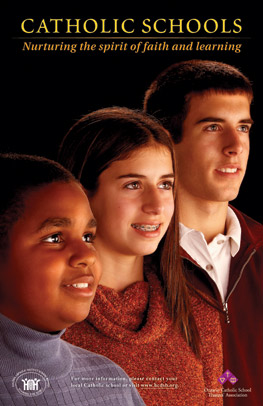Those parish school puzzles
 Are African Americans converting to Catholicism anymore? As Nicholas Lemann writes in The Promised Land, the old saying in Chicago was that when water was sprinkled on the forehead of a black baby, he or she was baptized essentially into three interlocking institutions: the Catholic Church, the Democratic Party, and the local buildings-trade union. Now one wonders what a future historian would write about the situation today. This question should have come up in Carla Rivera's otherwise fine story about the "grim economic reality" facing the nation's Catholic schools. Ms. Rivera presented eye-popping statistics -- there were 850 fewer Catholic schools in 2005 than 1990, and enrollment has dropped to a low of 2.3 million. She attributes this decline to fewer priests and nuns, a population shift from cities to suburbs, rising tuition costs. I don't buy it.
Are African Americans converting to Catholicism anymore? As Nicholas Lemann writes in The Promised Land, the old saying in Chicago was that when water was sprinkled on the forehead of a black baby, he or she was baptized essentially into three interlocking institutions: the Catholic Church, the Democratic Party, and the local buildings-trade union. Now one wonders what a future historian would write about the situation today. This question should have come up in Carla Rivera's otherwise fine story about the "grim economic reality" facing the nation's Catholic schools. Ms. Rivera presented eye-popping statistics -- there were 850 fewer Catholic schools in 2005 than 1990, and enrollment has dropped to a low of 2.3 million. She attributes this decline to fewer priests and nuns, a population shift from cities to suburbs, rising tuition costs. I don't buy it.
Although no one familiar with Catholic schools would dispute those explanations, they tell only part of the story.
Suburbanization can't be the main factor; Catholic schools have been overwhelmingly suburban since at least the 1970s. A declining share of priests and nuns can't be the main factor, either; those figures plummeted in the 1970s and '80s, yet the big drop-off did not occur until the 1990s. And rising tuition costs can't be the top reason; as Ms. Rivera's story implies, plenty of Hispanic kids are attending Catholic schools.
So there must be another reason or three in this what-dunit. One suspect clearly is the church-sex abuse scandal. Another is the reduced size of Catholic families, largely because of widespread use of birth control. Yet perhaps the most overlooked suspect is the failure of Catholics, black and white, to convert their black Protestant brethren or resistance by black Protestants to Catholic evangelization.
This explanation certainly resonates with me. My youngest sister, Sarah, teaches first grade at St. Elizabeth's in west Oakland. When I was growing up in the 1970s and '80s, St. Elizabeth's student population was all black (Protestant). Now the school is virtually all Hispanic (Catholic).
My sister's school is not alone. As The Washington Post noted recently, Archbishop Donald Wuerl of Washington endured vituperation after he proposed secularizing numerous Catholic schools:
(S)ome parents and parishioners reacted angrily, saying Wuerl's proposal would gut high-quality education for black children. The majority of the students in the schools that would be affected are black and not Catholic. The archdiocese subsidizes a large portion of their tuition.
According to Post reporters Theola Labbe and Jacqueline Salmon, Catholic officials blamed the introduction of Charter schools in the late 1990s:
Soon after he arrived in the District in June 2006, Wuerl said he heard from Catholic education officials that the inner-city schools were no longer financially viable. Part of the reason was that many poor families were choosing charter schools, which are free.
But the end of the Post story shows that charter schools can't be the main reason. After all, Hispanics continue to attend Catholic schools in the diocese of Arlington, Va.:
There, school enrollment has swelled 25 percent. The diocese has opened eight elementary schools because of rapid growth in the area's outer suburbs and rising numbers of Hispanic Catholic immigrants in the closer-in suburbs.
For whatever reason, black Protestants today are not following in the footsteps of their forebears in such black Catholic enclaves as Chicago and New Orleans. Granted, a reporter who nailed this story would deserve the Pulitzer. But he or she could explain why Catholic schools are diverse but, well, increasingly parochial.